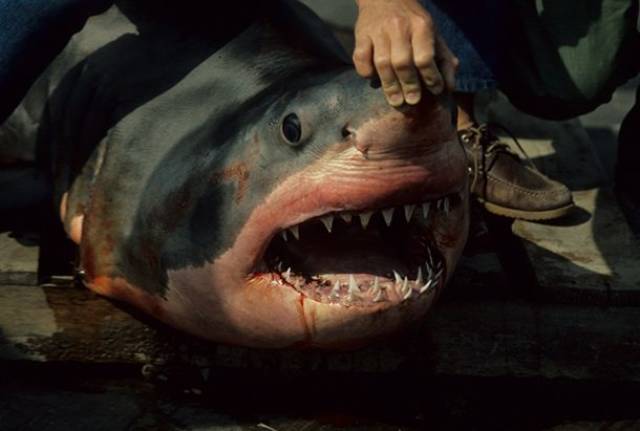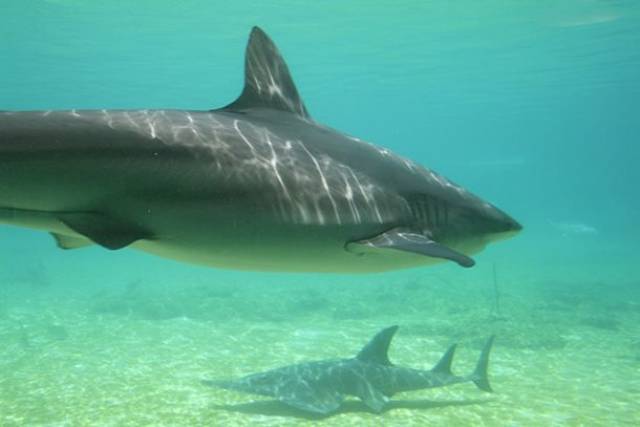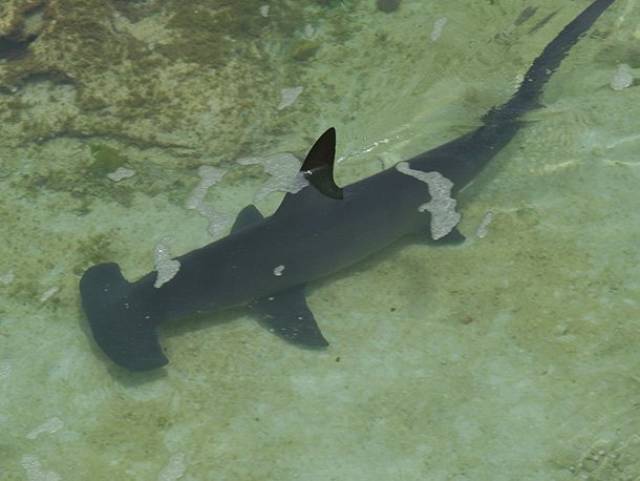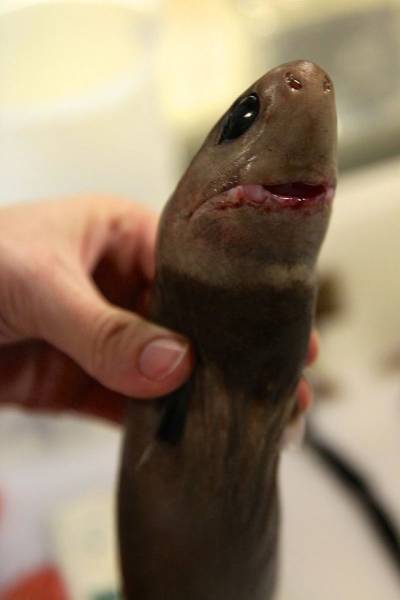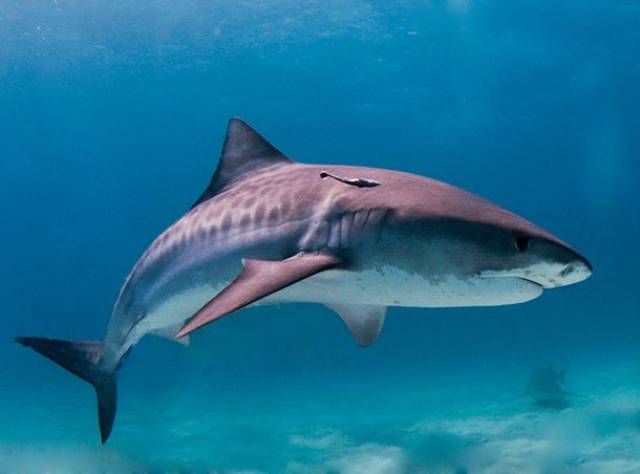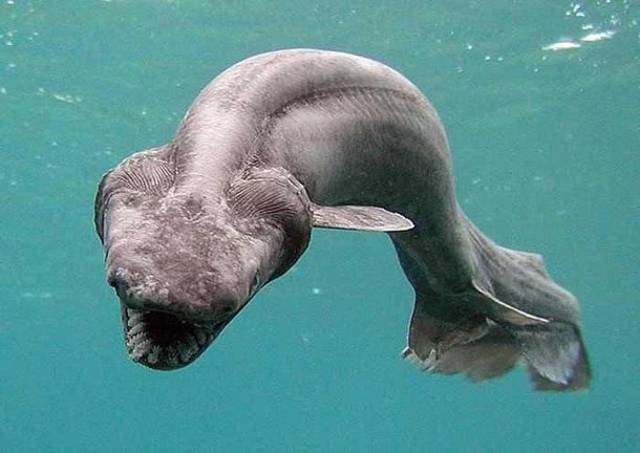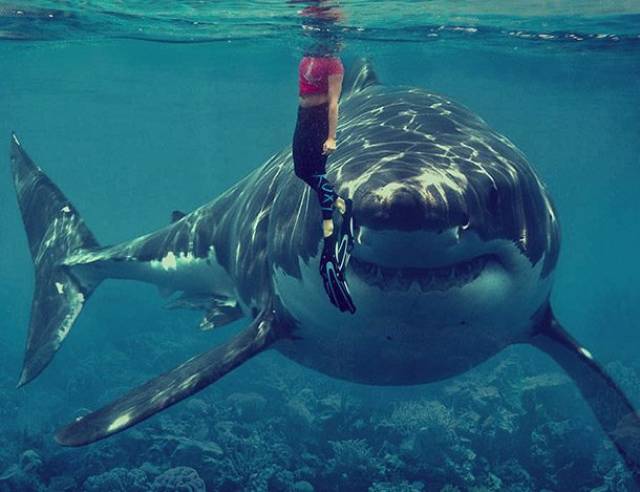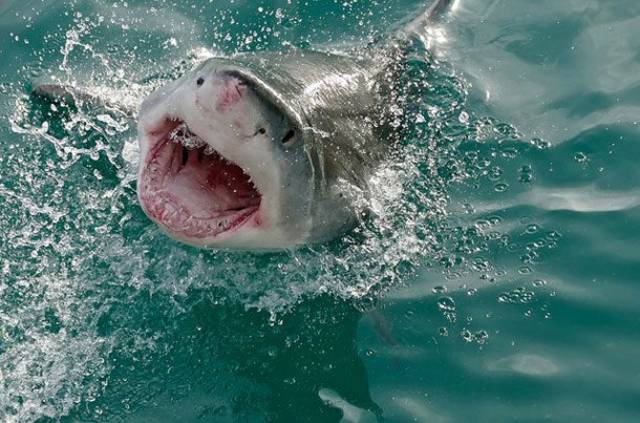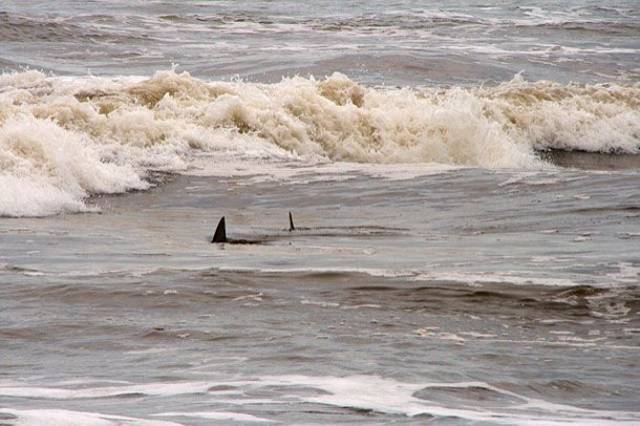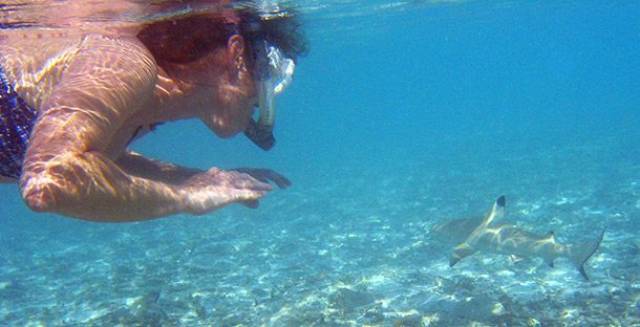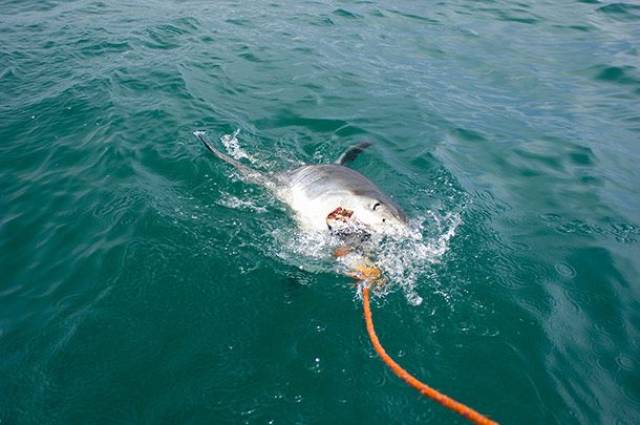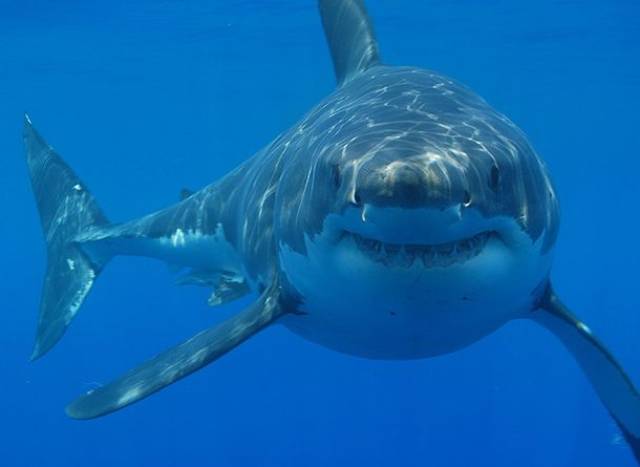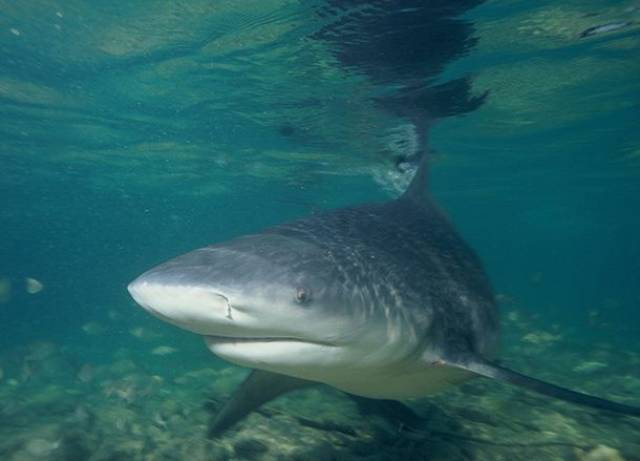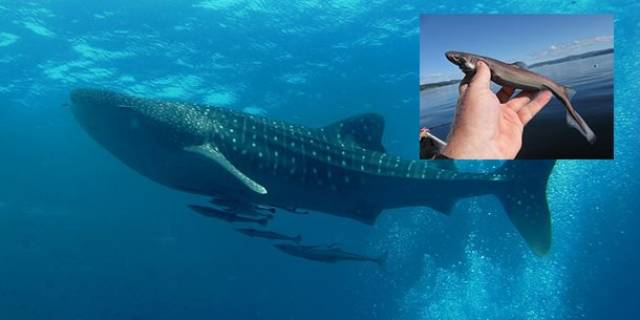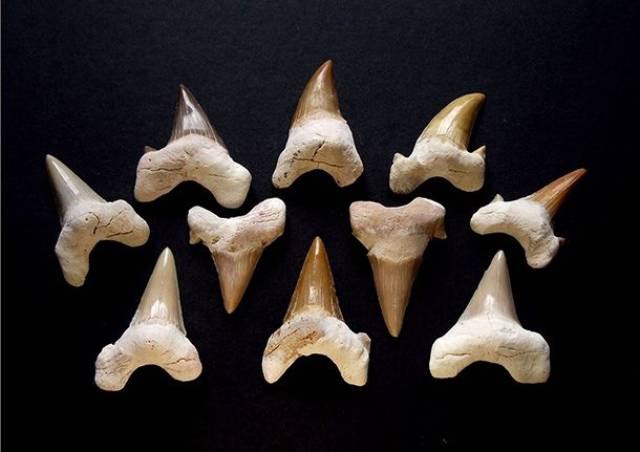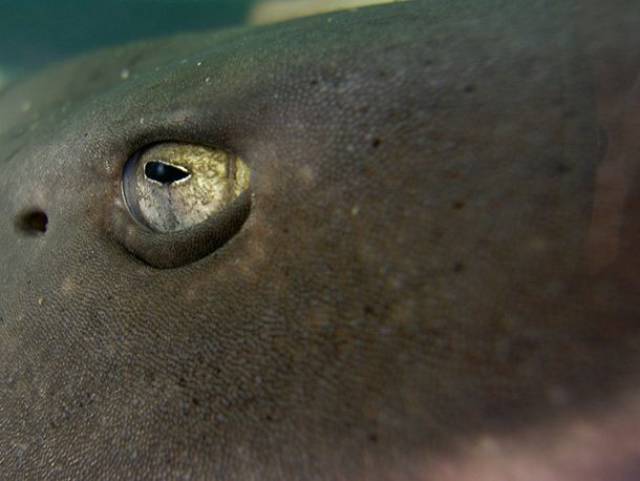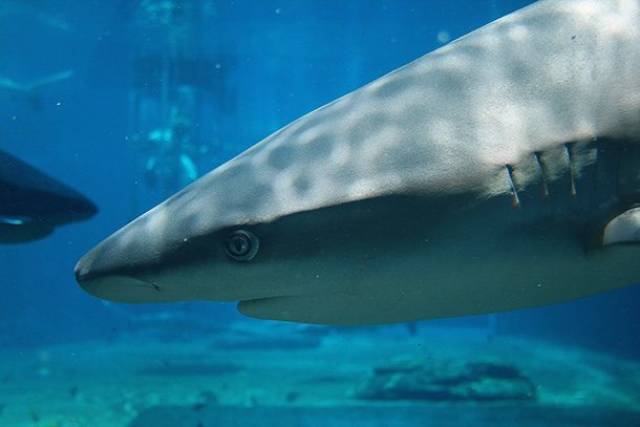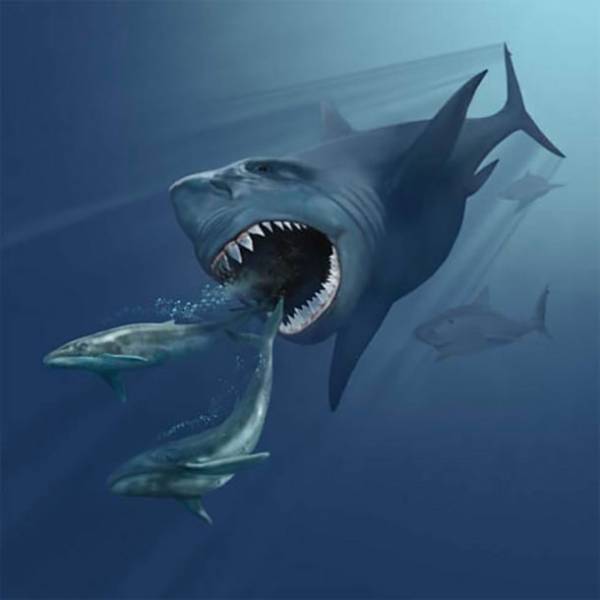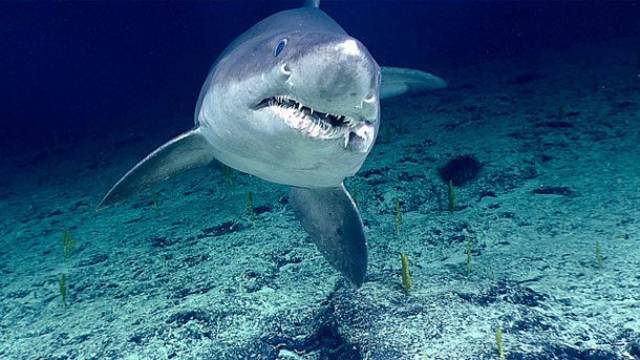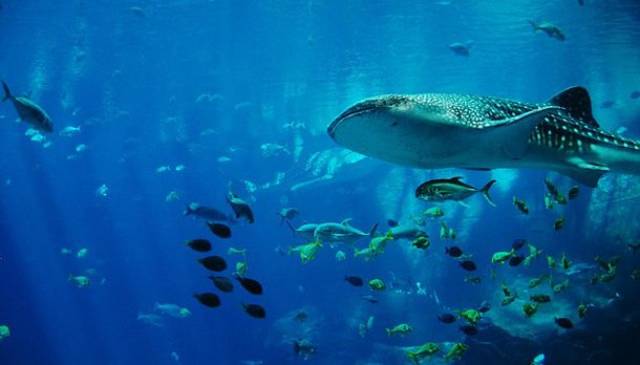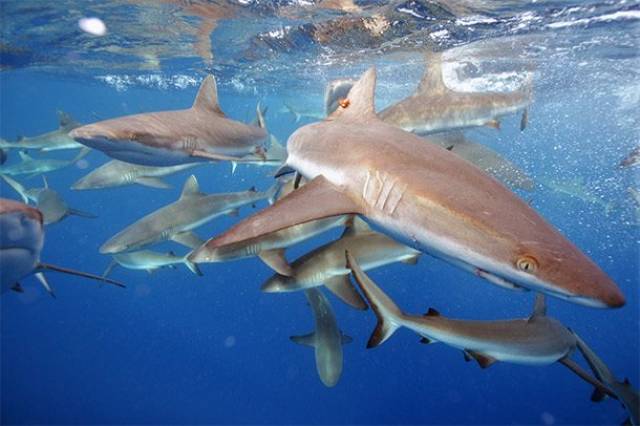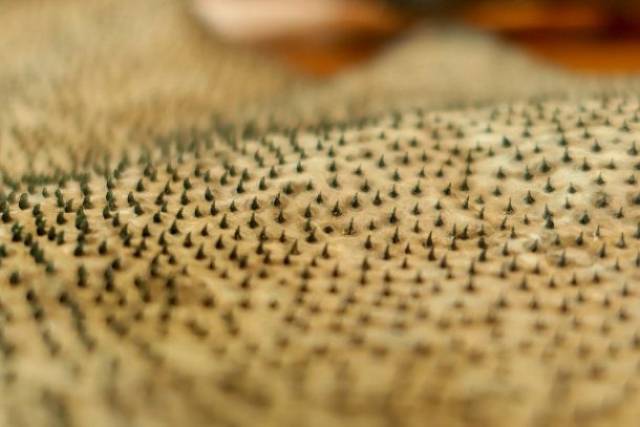Expensive Dental Bills
The average shark has 40-45 teeth and can have up to seven rows of replacement teeth. Because sharks lose a lot of teeth and grow them back quickly, they often go through more than 30,000 teeth in a lifetime.
Bad to the Bone
Sharks today don’t have bones. Their skeletons are made of cartilage. Subsequently, this makes it harder to study their fossils, but paleontologists believe they found an earlier ancestor to sharks that actually did have bones once.
Jam Packed
Hammerhead sharks are born with soft heads so they won’t jam their mothers’ birth canals.
Not Your Mama’s Cookies
The Cookiecutter shark’s name stemmed from its unusual feeding method. The sharks attach its mouth onto its victim and carve out a hunk of flesh, leaving a circular wound in its prey that resembles the hole a pastry cutter forms in dough.
Survival of the Fittest
The first tiger shark pup to hatch inside its mother’s womb devours its unborn siblings until only two pups remain, one on each side of the womb.
Prehistoric
Sharks inhabited the earth 200 million years before the dinosaurs appeared and have changed only minimally during that time.
It’s a Man’s World
Despite an equal amount of men and women swimming in the ocean, men account for nearly 90 percent of shark attack victims.
Stomachs of Steel
Shoes, chairs, boxes of nails, drums, entire bottles of wine, and the rear half of a horse are just some of the many bizarre objects that have been found in sharks’ stomachs over the years.
Knee Deep
If you have a fear of sharks, then this isn’t going to help you. About two-thirds of shark attacks on humans have occurred in less than six feet of water.
What are the Chances?
However, shark attacks and deaths resulting from them are very rare. About 10 people died during shark attacks in 2013. You have a 1 in 3.7 million chance of being killed by a shark, which means you have a greater chance of being killed by bee stings or struck dead by lightning.
Putting Things in Perspective
In contrast, humans are much more dangerous predators of sharks. For every human killed by a shark, 100 million sharks are killed by humans per year. That might even be a conservative estimate. Some believe it could be as high as 273 million.
Cancer Cure
Scientists study shark cartilage to research possible cures for cancer because sharks have shown incredible longevity and rarely ever develop cancer.
Largest Shark
While data needs to be confirmed, it’s quite possible a Great White Shark near Phillip’s Island, weighing 5,085 lbs and measuring almost 21 feet long, was the largest shark ever caught.
Adaptation
Unlike most sharks that only can survive in salt water, Bull Sharks can live in both salt and fresh water with kidneys that can gradually adjust to suit the type of water they’re in.
Just Breathe
Most sharks must swim constantly to force water through their mouths and over their gills because they lack the ability to pump water over their gills like the majority of fish.
From Miniature to Massive
Measuring only seven inches long, the Dwarf Lantern Shark is the smallest shark in existence. On the other hand, the Whale Shark is the world’s largest shark. It can grow to be 50 feet long and weigh more than 40,000 pounds.
Shark Repellant
The Moses sole is a rare fish sharks cannot eat. When a shark bites into one, the fish releases a chemical that causes the shark to release it. Scientists are currently attempting to recreate this chemical so they can use it to repel sharks from humans.
Arrows
Native Americans on the east coast, including Florida, used the teeth of Great White sharks as arrowheads. Shark teeth were found with Native American graves and they may have also used them for tools and necklaces.
All the Better to Hear You With
A little-known fact about sharks is that they have an acute sense of hearing. Some sharks can hear prey, like a struggling fish, up to a kilometer away.
It’s All in Their Head
Sharks’ ears are located inside their heads. They have two holes called endolymphatic pores that lead to ducts filled with fluid that carry sound waves. Hearing is their strongest sense.
Rumor Has It
An ancient shark called Carcharodon Megalodon (“rough tooth, big tooth”) had teeth measuring more than six inches long (the largest shark teeth ever found), jaws big enough to swallow an entire car, and a body the same length as Tyrannosaurus Rex. Some believe this shark may still exist in deep water.
Not Picky Eaters
The Tiger Shark is the second-most dangerous shark in the world. It’s sometimes referred to as the “garbage can of the sea” because it will eat anything. Remnants of a chicken coop filled with bones and feathers were once discovered in the stomach of a dead tiger shark.
Go Lay an Egg
Whale sharks lay the largest eggs of any animal on land or in the sea. The largest whale shark egg on record measured 14 inches in diameter.
Shark Bait
Some South Pacific islanders considered sharks to be gods and offered human sacrifices to them until as recently as the nineteenth century.
Thick Skinned
Shark skin is very tough, thick, and unique, providing very good armor and protection. Whale sharks even have skin up to 4 inches thick!

